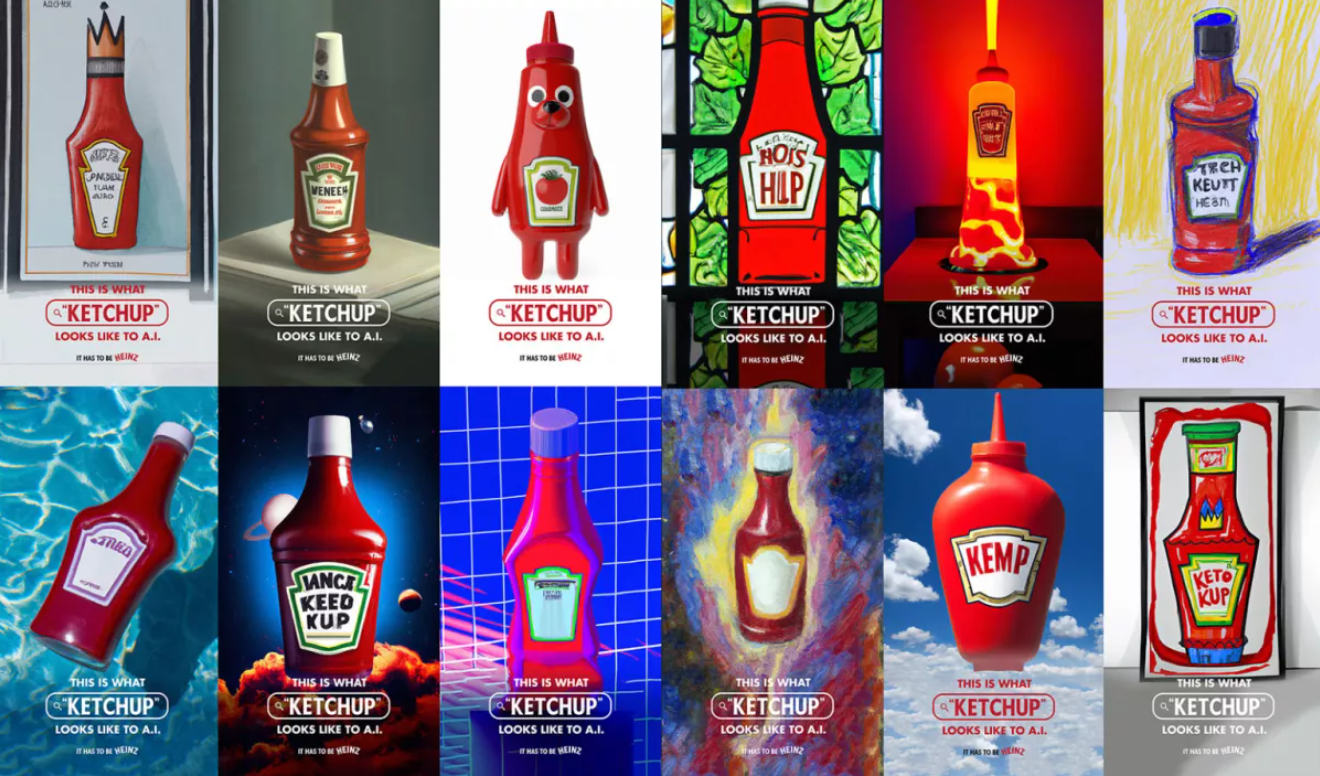Marketing is in a bit of an experimental phase and it’s in no small part due to AI’s explosion onto the scene. It seems like every day there’s a new AI tool or use case for marketers to test out on their audiences.
And as audience members ourselves, we now have a fun new guessing game of what’s been created with AI and what hasn’t. Well, we may not always have to guess—since it is still the experimental phase, some examples are a bit easier to notice than others.
So, we thought it’d be fun to highlight some great examples of AI in marketing…and some that are not so great. That said, we all could end up on a “not so great” list at some point so we aren’t here to judge. Instead, we’re here so you can hopefully leave with some inspiration and guidance to heed in your AI endeavors.
You didn’t come here for a long preamble though, let’s get to it.
Note: This list is ongoing as new campaigns and examples are happening every week, so be sure to check back to see updates and any additions to the lists…great or not so great.
Great Examples of AI in Marketing
Predictive Goals Helps Redfin Engage Inactive Users
We’re starting off with an example Iterable played a part in. #NoShame. But really, the beauty of what Redfin is doing with AI is that they’re accomplishing the near impossible: re-engaging inactive users at astounding rates.
Due to the nature of home buying and selling, only a small percentage of Redfin’s audience is considered active—defined as having engaged with an email or visited Redfin.com in the last 30 days.
So, with such a large inactive audience, it became increasingly difficult to predict which inactive users to send conversion-oriented emails to. It required developer and engineering support to sift through the millions of users and identify their place in the lifecycle.
Iterable’s Predictive Goals, part of Iterable’s AI Suite, removed the guesswork and manual labor of this task, predicting the highest converting users to move them from inactive to active. Working with select groups of buyers and sellers to test, Redfin saw a 72% lift in converting inactive sellers and a 15% lift in converting inactive buyers.
AI is about efficiency and optimization. Predictive tools like Predictive Goals make it infinitely easier on teams to achieve their goals much quicker.
Heinz Uses AI Image Generation to Prove Brand Recognition
What do you see when you picture a ketchup bottle? If you’re like OpenAI’s Dall-E 2, you see something reminiscent of a Heinz bottle of ketchup.
Consumer-facing AI tools have made copy and image generation a breeze. But smart marketers have figured out how to take advantage of the fact that these tools scrub the web to source their information.
Heinz got crafty—and confident—in thinking their iconic logo and bottle would stand up to an AI search for “ketchup”.


Heinz tested AI to see how iconic their label is—and it paid off. Source: Heinz.
Not everyone has the type of brand recognition or clout as Heinz does, but what it does show is that AI image generation can be more than a fun exercise.
ClickUp Optimized Their Blog SEO With AI
Advanced segmentation and predictive algorithms are not the only AI use cases. You can also optimize your SEO using AI tools like ClickUp did.
Using SurferSEO, ClickUp’s SEO team of three was able to:
- Get actionable SEO data quickly
- Improve visibility into strategic copy for writers to manage their work
- Plan content, draft it, and maintain it post-publish
By analyzing and producing over 150 optimized posts, ClickUp saw an 85% increase in blog traffic. Efficient and optimized.
Sephora’s Virtual Artist Brings the Store to You
What we’ve noticed is that AI tools and AI-powered features work best as accelerators, making other technologies and tools easier to use. Sephora’s virtual artist uses AI technology combined with virtual reality technology to give customers the store experience from their phone.
In the last few years, rapid digital transformation has blurred the lines between the in-store experience and the digital one. By allowing customers to “test” makeup options from home using their own face, Sephora is giving a similar experience as the one in the store using samples.
One of marketing’s main goals is to simplify the process for the customer. Sephora is using AI here in a brilliant way to give customers an experience they desire from wherever they want.
The Not-So-Great Examples of AI
Unfortunately, you can’t really decide what’s great without seeing what’s not so great. While the below examples are not strictly in the marketing realm, the intent and use of AI in these situations can easily be adapted to marketing, so we’ve decided to include them for your understanding of what to keep in mind when adding AI to your toolset.
Avoid Bias in AI
Whether it’s race, gender or other forms of bias, we have seen a few AI examples fall into the trap of excluding or diminishing certain people.
COMPAS (Correctional Offender Management Profiling for Alternative Sanctions) used an AI algorithm to predict the likelihood of repeat offenders. In practice, the algorithm predicted black offenders were twice as likely than their white counterparts to repeat an offense.
Amazon created a recruiting tool that would scan resumes and applications, suggesting the best possible candidates. In this case, the algorithm analyzed resumes of successful candidates over the previous 10 years, which skewed heavily male. Amazon, to their credit, identified the issue and never used the algorithm to select employees.
Most AI tools are using historical data at speeds impossible for humans to replicate. However, that means the success of the tool is heavily reliant on the data inputs—like weighted race or gender data in the examples above.
When considering AI for your next campaigns, make sure the data is demographically accurate for the audience you are targeting and doesn’t exclude or diminish any one group.
Check Your Work
For image and copy generation, we cannot stress this enough: check your work. While astounding, many of these AI tools are still in the process of being refined, so some of the results are funny—at best—and a bit frightening—at worst.
Always do a double check to make sure no phrasing is out of place or the image is realistic—if that’s your goal. Take this AI-generated beer commercial where realism was definitely the goal…but not the result.
A simple check of the prompt is always worth doing to make sure you’re getting exactly what you want…like “a corgi marketer who uses AI tools responsibly.”


Alt search option: the goodest employee. Source: Midjourney.
We’ll be updating this list periodically as new examples of great and not so great AI marketing come through. Be sure to subscribe to our blog to always be in the know about all things marketing!
































